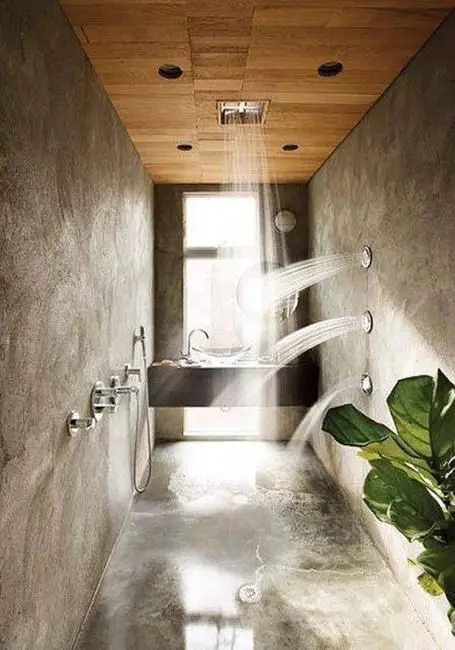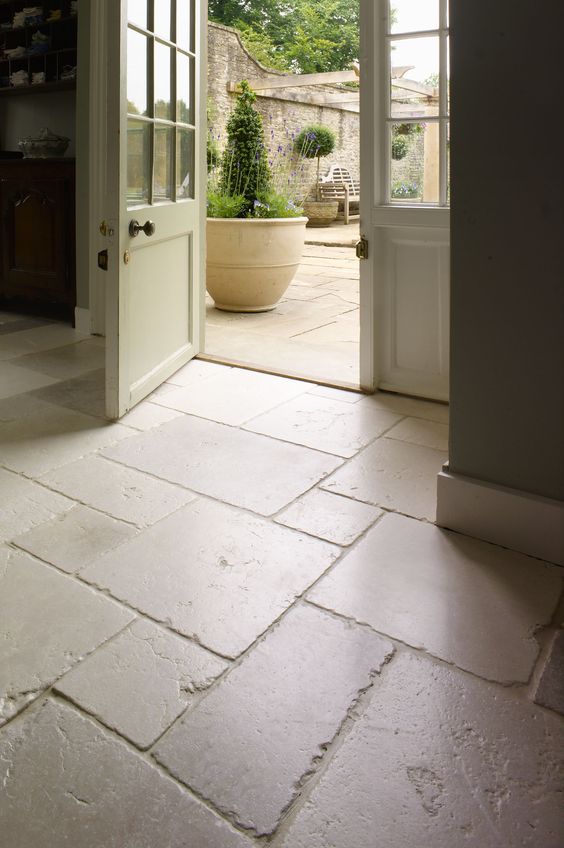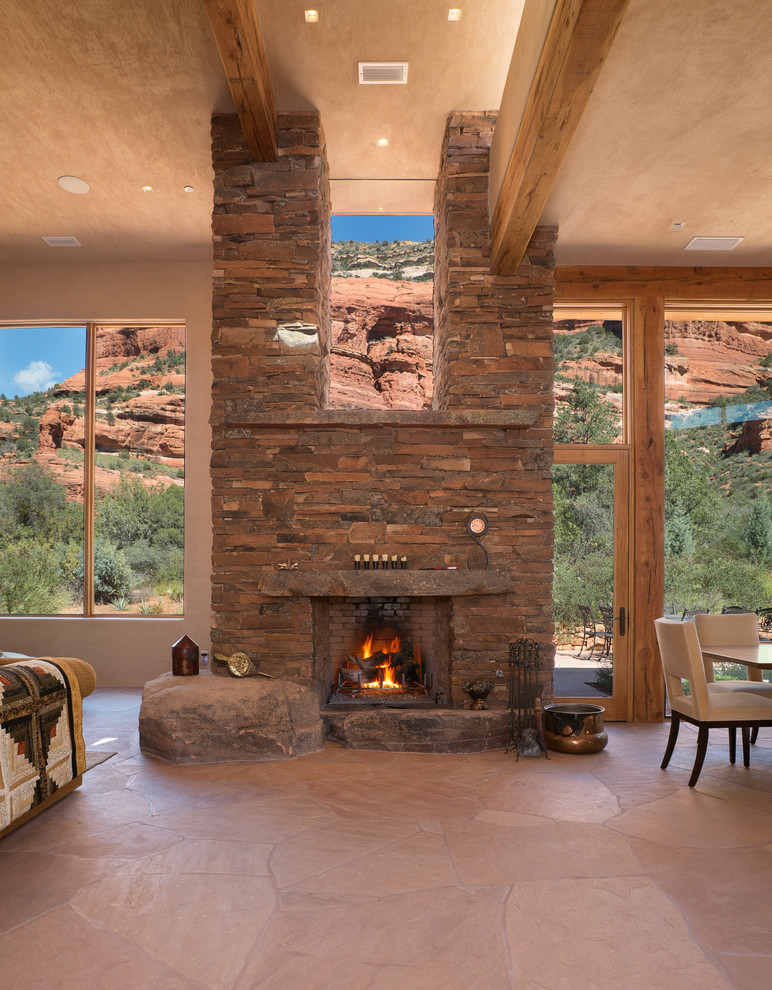Natural stone has been popular for use on floors for centuries and for very good reason. Stone tile brings the colors and texture of nature to our homes and adds a quality and warmth to a room that’s not possible with any other material, and it’s super durable. They can be used in heavy traffic areas, most typically: halls, kitchens, sitting rooms, bathrooms, and you can use the same stone throughout to extend your living space and create a natural flow into your garden and bring indoors outdoors.
The most popular stone tile materials: slate, travertine, sandstone, granite and marble.
Slate tile has a duller and slightly uneven look, and it’s a perfect choice if slip resistant flooring matters to you. It comes in a variety of colors and patterns, often providing a rustic or modern look and feel. It is more stain resistant than other stone choices, takes water well, and is highly durable.
Travertine is a porous stone with natural holes from formation. In order to protect it, it must be sealed prior to grouting and again after installation for protection. It will soak up liquids and will stain if left untreated.
Like all natural stones, marble must have a protective sealant applied before use, and must be maintained and reapplied regularly for full protection. Marble is susceptible to staining, so its important to clean up spills immediately to avoid potential damage.
Because granite is very hard and unforgiving, when installing it as flooring, the subflooring must be completely level and have the strength to support its heaviness. If the floor has bumps or even tiny valleys, granite tiles will crack easily.
Sandstone flooring is a rock, but it’s a relatively soft rock. That means that it is subject to scratches and dents over time from claws, high heels, and accidents that send things crashing into the floor. If polished, it can be slippery.
Stone Flooring In The Kitchens
Stone is easy to maintain, it’s very hard to harm stone floors, you can spill and drop whatever you like, and stone flooring won’t be spoilt. Stone is perfect for kitchens especially with animals, they won’t scratch the floors. Stain-resistant, strike-resistant and scratch-resistant, what can be better for such a functional space as a kitchen?

Old stone kitchen flooring, stone can last for a very long time.
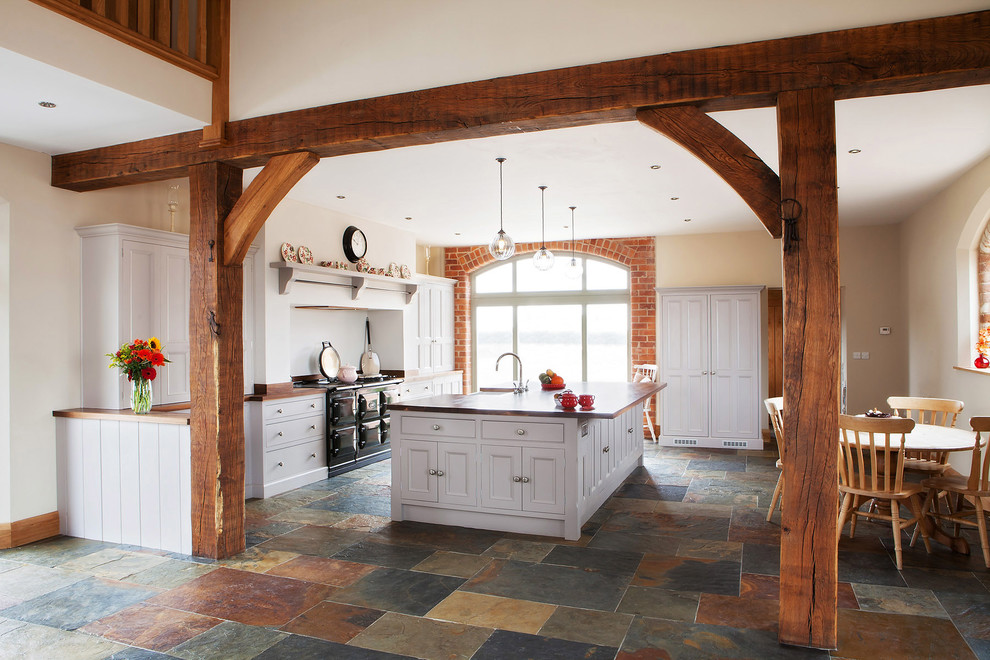
Barn-inspired interiors looks great with natural stone-inspired tiles. (Hill Farm Furniture Ltd).

Rustic kitchen where even flooring looks rustic. (Studio Schicketanz).
Stone Flooring In The Bathrooms
Choose marble and travertine for their sleek, clean lines and mosaics are perfect for use as insets or on their own and lend themselves particularly to areas where dampness and humidity will require a slip resistant surface. Travertine can add flair to any room on both walls and floors in creamy colors, it is hard-wearing and versatile. Marble will make your bathroom luxurious and will make your staying there a spa experience.

grey large format stone tiles for bathrooms.

Colorful things looks great on natural stone floors. (Isaman Design, Inc.).

rustic stone floors for a clean bathroom are very durable and water-resistant.
Stone Flooring In The Entryways
As for entryways, stone floors can create an impression of outdoors brought indoors. Due to the durability and all kinds of resistance, stone floors are ideal for an entryway, it’s often a heavy traffic area and stone is very long-lasting.

Slate flooring is a natural choice for an entryway. (Stoner Architects).
The perception is that a stone floor can be cold; however this of course is a benefit when the weather is hot but for when it is colder this can be overcome with under floor heating, and of course once warmed it retains the heat really well.
Stone Flooring In The Living Rooms And Open Layouts
Stone floors works well for open layouts. They are wearing resistant and works as for a kitchen, as for a dining room as for living area.
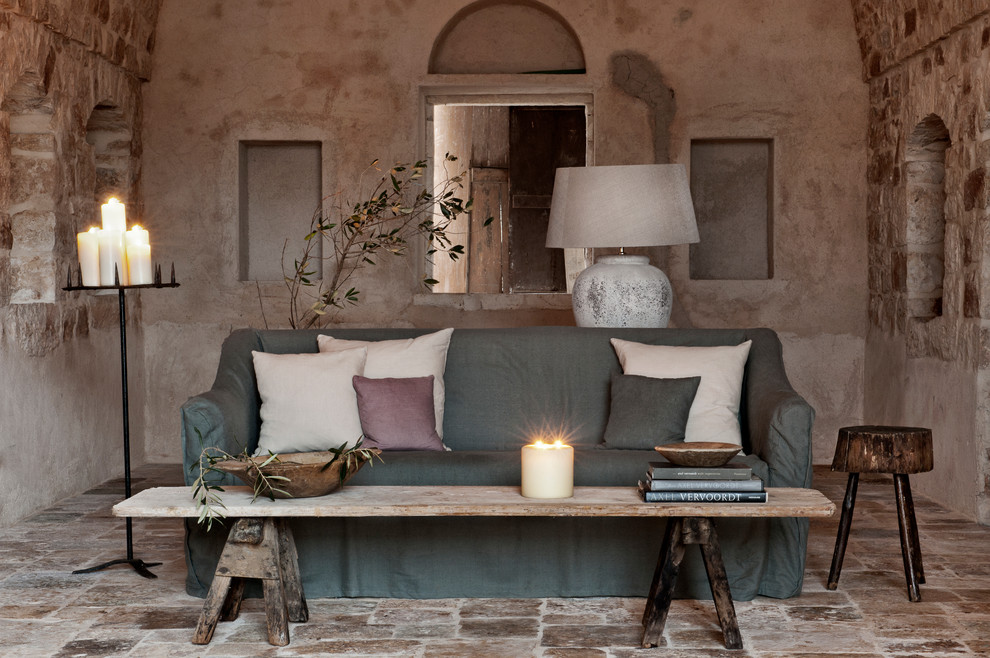
Aged stone looks great and reminds of Mediterranean. (Alexander Waterworth Interiors LTD).

Natural paver flooring is the most practical choice if it combines several rooms. (Charleston Building and Development).

Stone flooring works well for open layouts. (Charlie Barnett Associates).

This cozy space features only natural materials and is a great example of a remote cabin interior. (Sticks + Stones Design Group inc.).

Slate floor looks great with stone walls and natural wood. (Prentiss Balance Wickline Architects).












